Complete Solutions to SOLVED Example of chapter ALKENES AND ALKADIENES of Class 11 book with complete answers and questions
| Class 11 | CHEMISTRY |
| Chapter | ALKENES AND ALKADIENES |
| CENGAGE CHEMISTRY | SOLVED Example |
| Number Of Questions | 62 |
| Academic Year | 2023-24 |
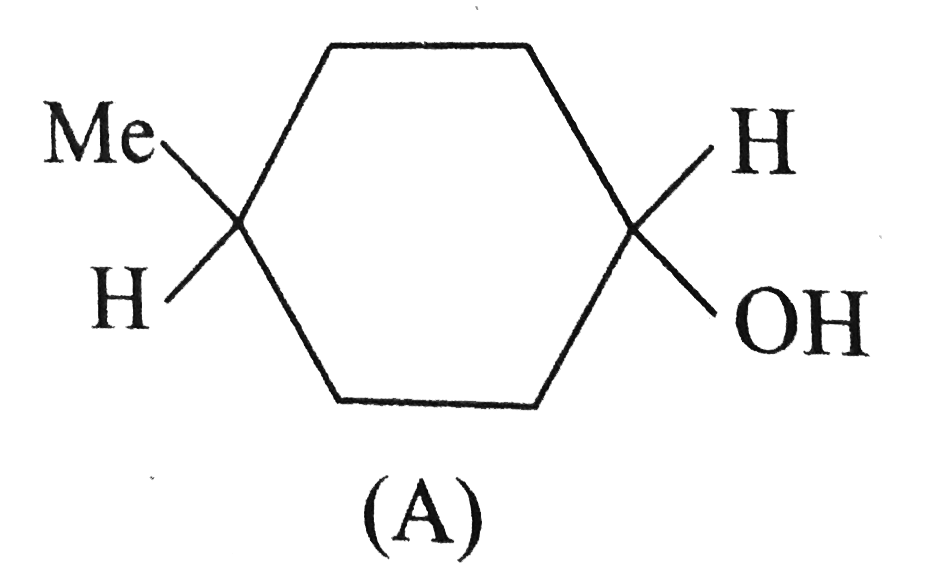
Dehydration of `(A)` with conc. `H_(2)SO_(4)` gives a compound that exists in two isomeric forms. Give the structurest of both the isomers.
View Solution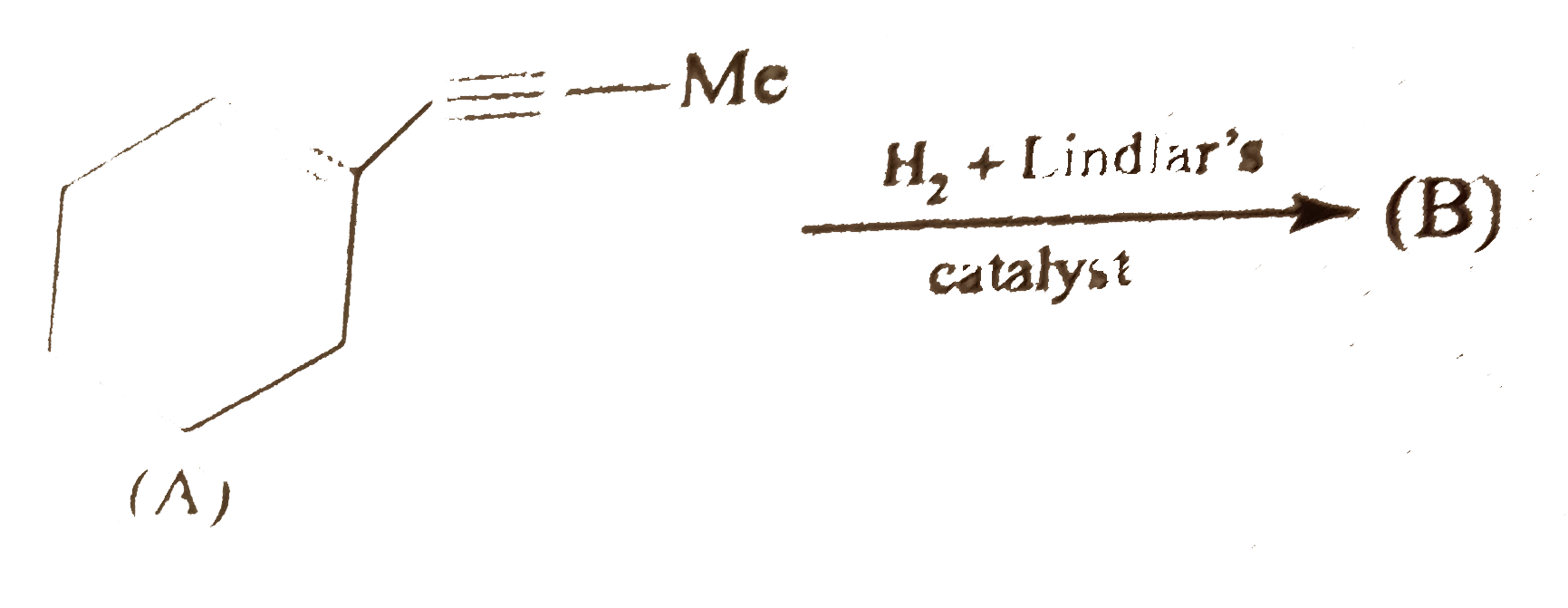
Identify product `(B)
View SolutionIdentify `(A)`.
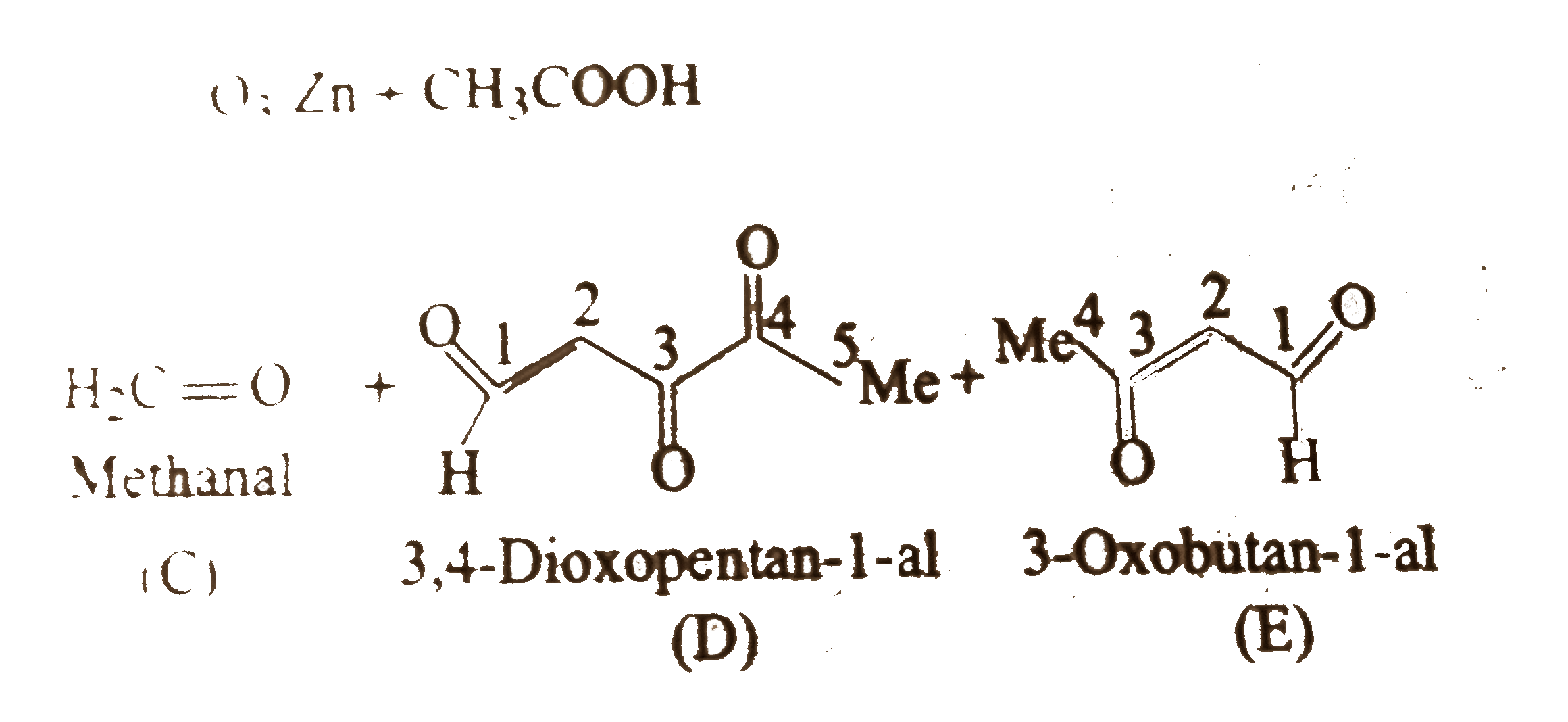
View Solution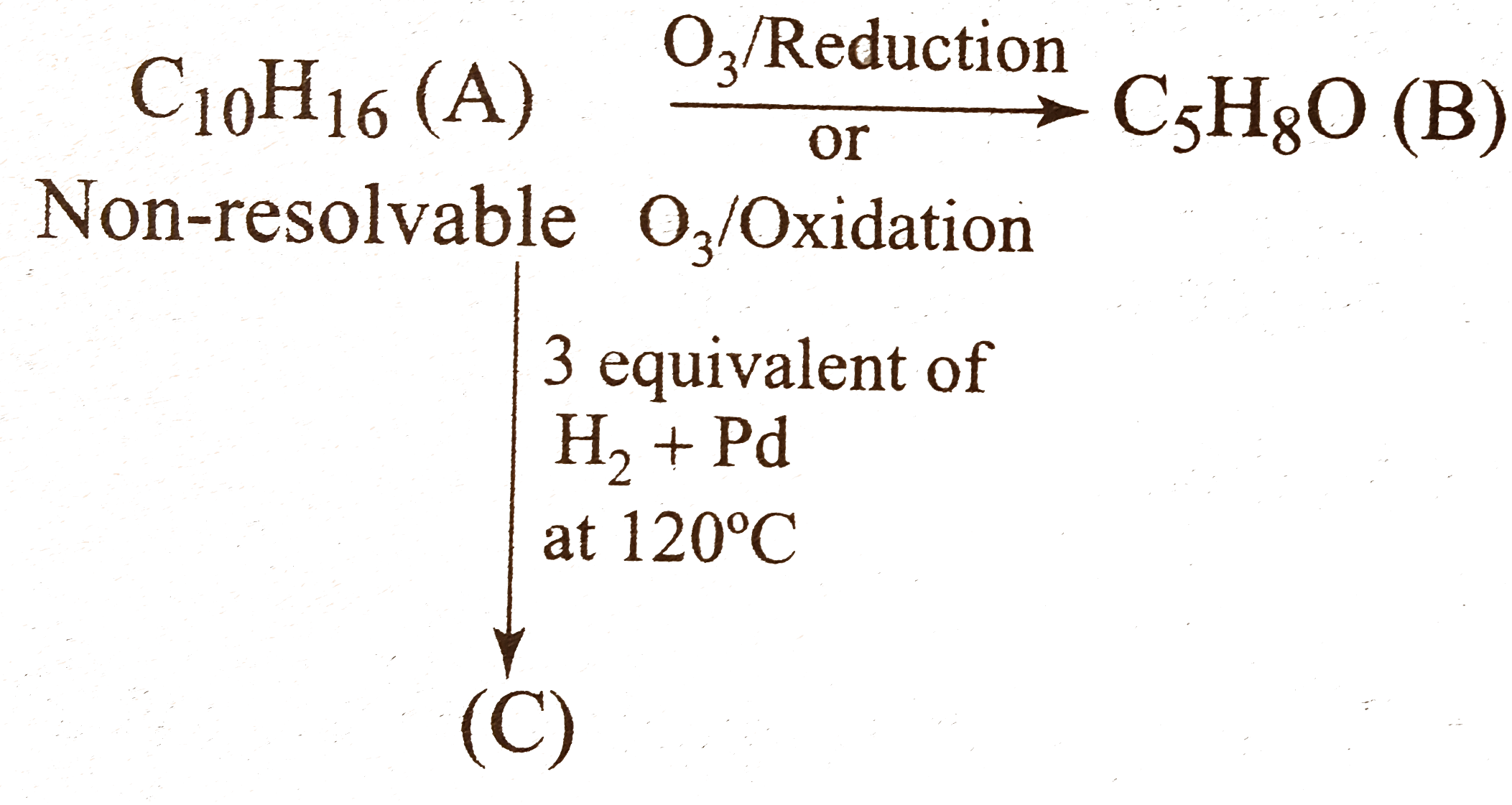
a. Write all the possible structures of `(A)` and `(B)`.
b. Write all the possible strutucres of `(A)` and `(B)`, if both are resolvable.
View SolutionIdentify the structure of hexyne.
View SolutionGive the number of stereoismoers of `(A)` in the following reactions.
`a.` `(A)(C_(7)H_(12))overset(O_(3)//o x id. )rarrunderset((B))(Acet on e)+underset((C))(Oxalic a c i d) +underset((D))(Acetic aci d)`
`b.` `(A)(C_(8)H_(14))overset(O_(3)//o x id. )rarrunderset((B))(Butane-2-en e)+underset((C))(Oxalic a c i d) +underset((D))(Acetic aci d)`
View SolutionComplete the following reaction with appropriate reagents.
`a.`
`b.`
View SolutionExplain the formation of the products giving the structures of the intermediates.
`a.`
`b.`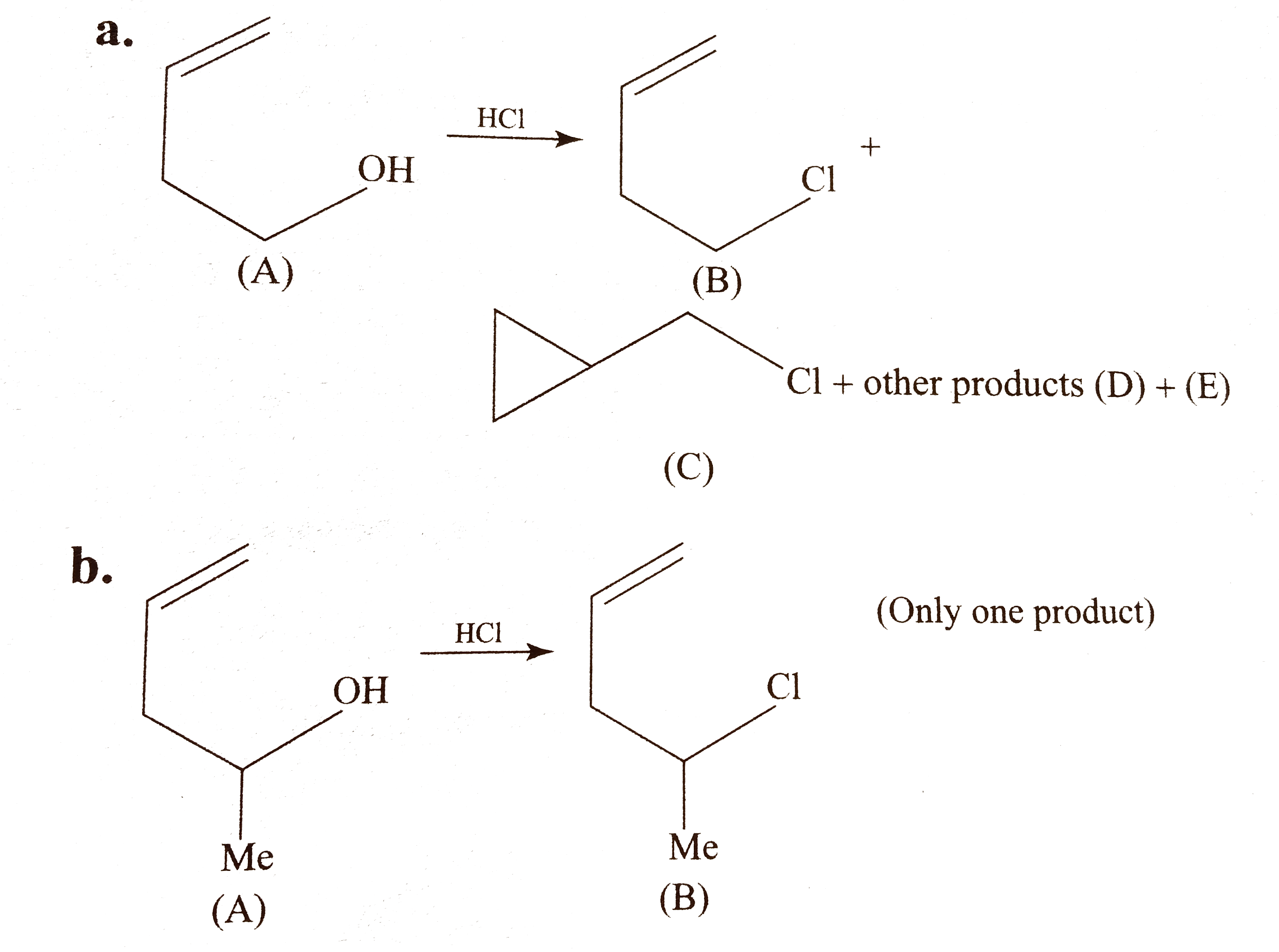
View SolutionWrite the intermediate step and give the product of the following reaction.
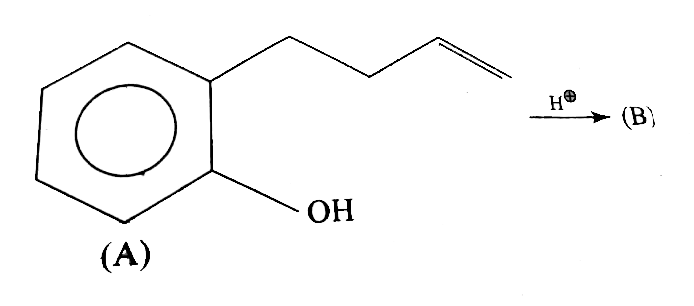
View SolutionComplete the following reactions `:`
`a.`
`b.`
View Solution`a.`

Identigy `(B)` and `(C)` and also explain the formation of `C^(14)(C^(**))` in the compound `(C)`.
View SolutionComplete the following reaction `:`

View SolutionGive The Structure of Butanoic Acid, and name the Functional Group Present
View SolutionIdentify `(A), (B), ` and `(C)` in the following reaction.

View SolutionWhat is the numberical value of `(B)' and what types of isomers are they ?
`a.`
View SolutionComplete the following reaction `:`
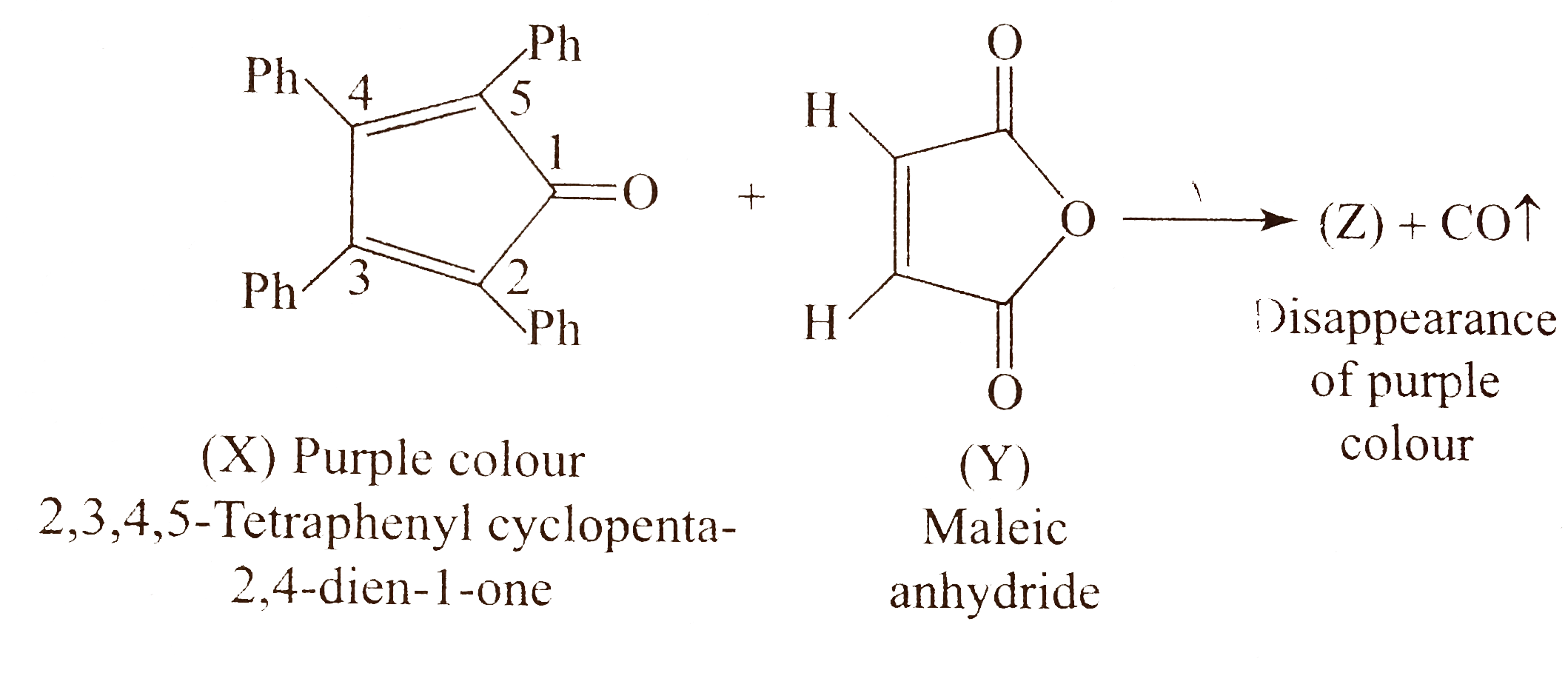
View SolutionComplete the following reaction `:`
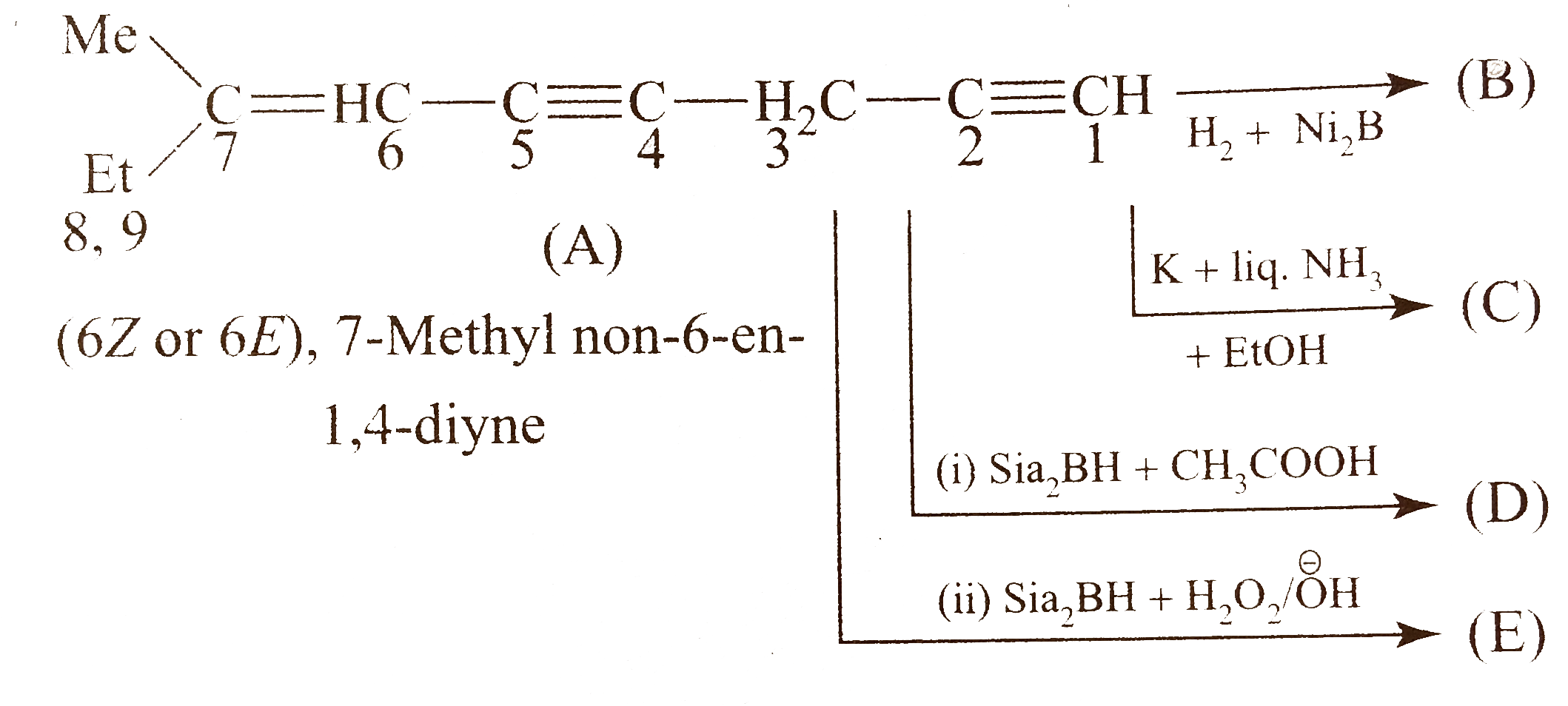
View SolutionIdentify the structure of propyne.
View SolutionWrite the product with its mechanism.
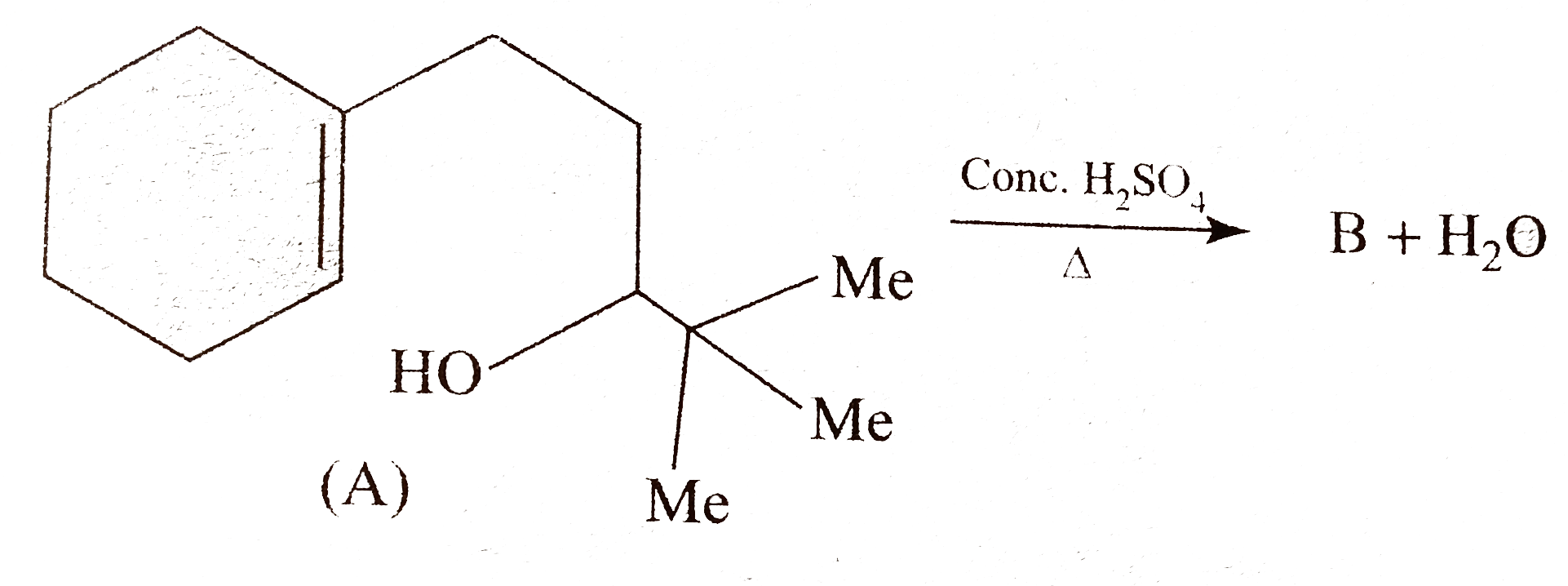
View SolutionIdentify `(A)` to `(D)`.
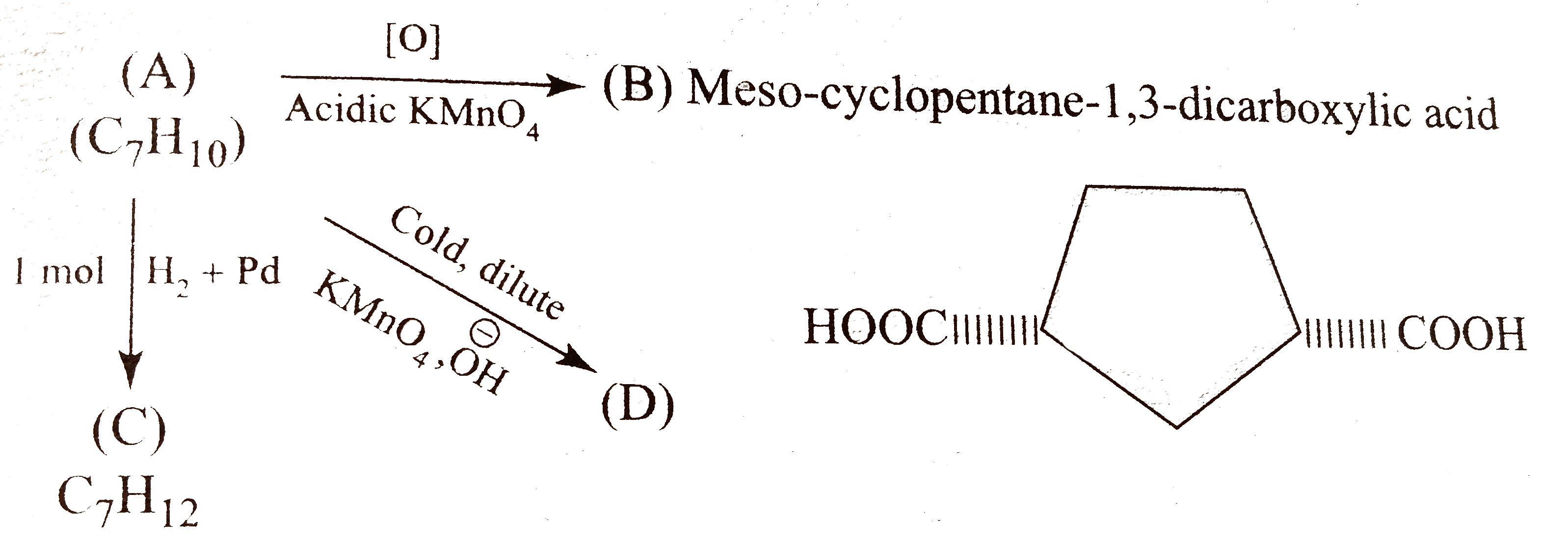
View SolutionIdentify `(A)` to `(G)`.
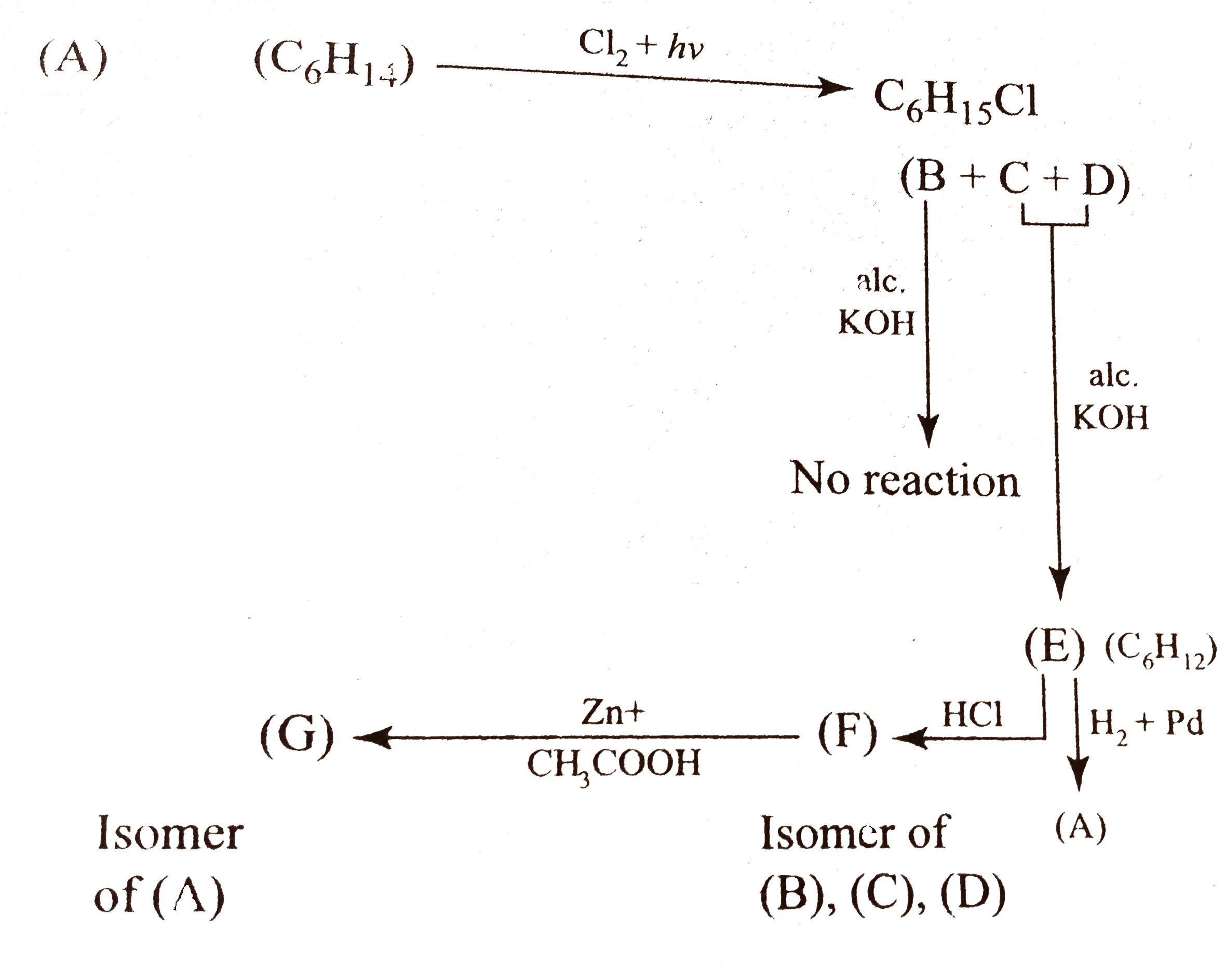
View Solution`CH_3-CHO` is
View SolutionWhich of the following show `G.I.`?
`a.`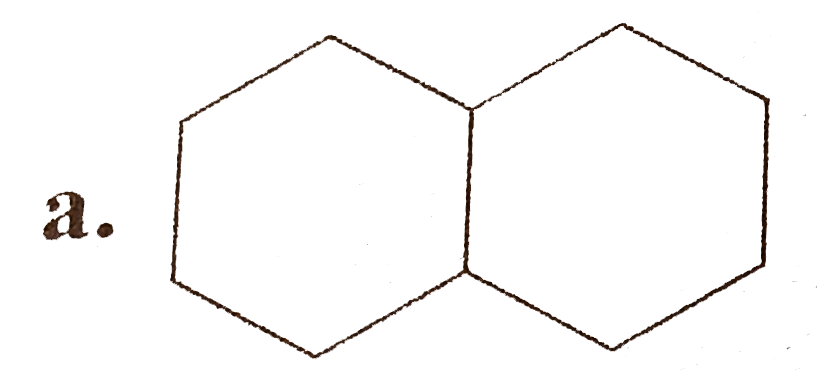
`b.`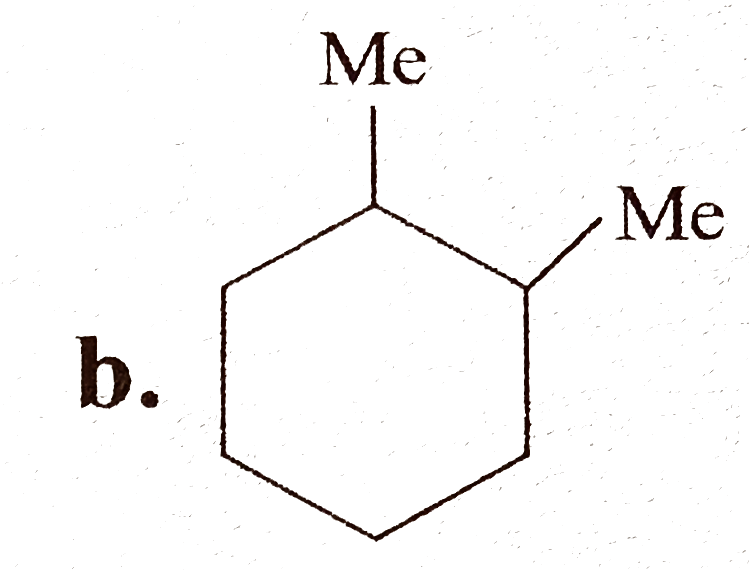
`c.`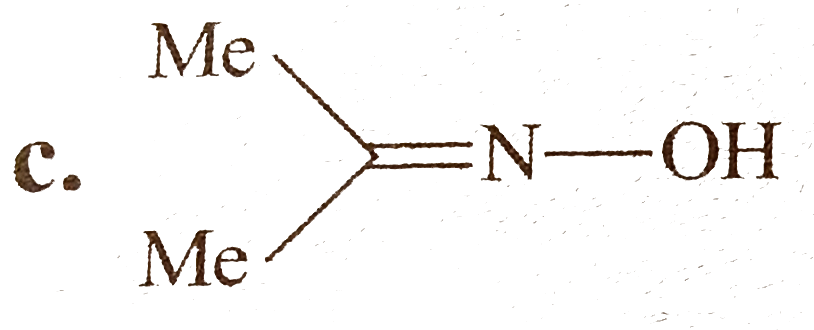
`d.`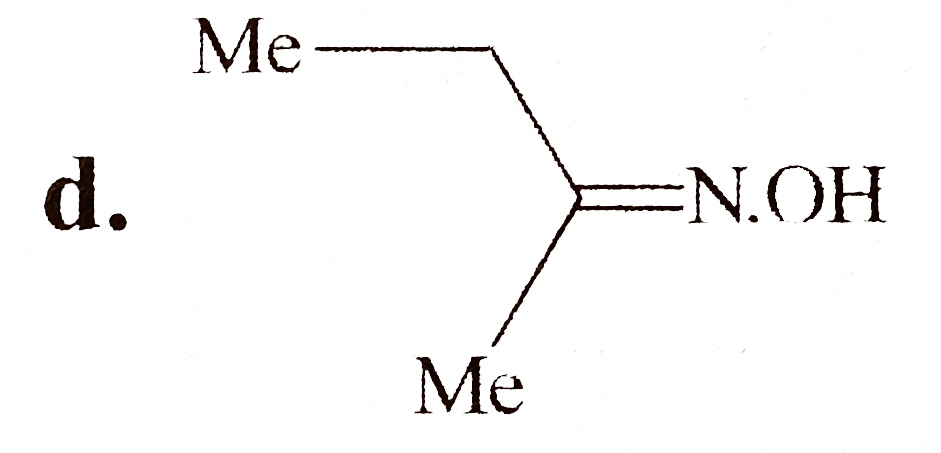
View SolutionGive `IUPAC` name to each to the following using `E` or `Z` designations.
`a.`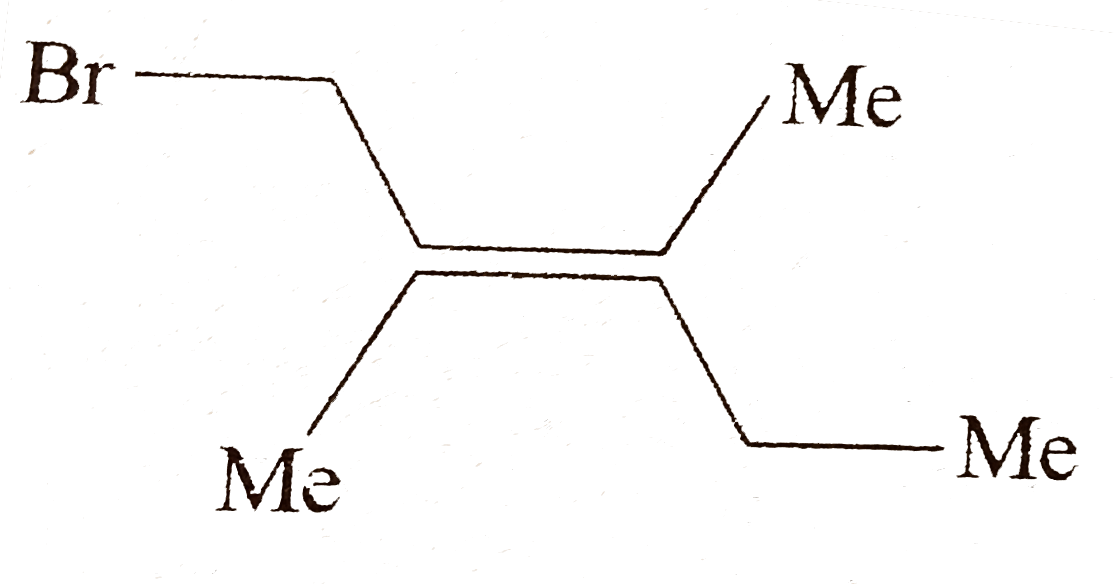
`b.`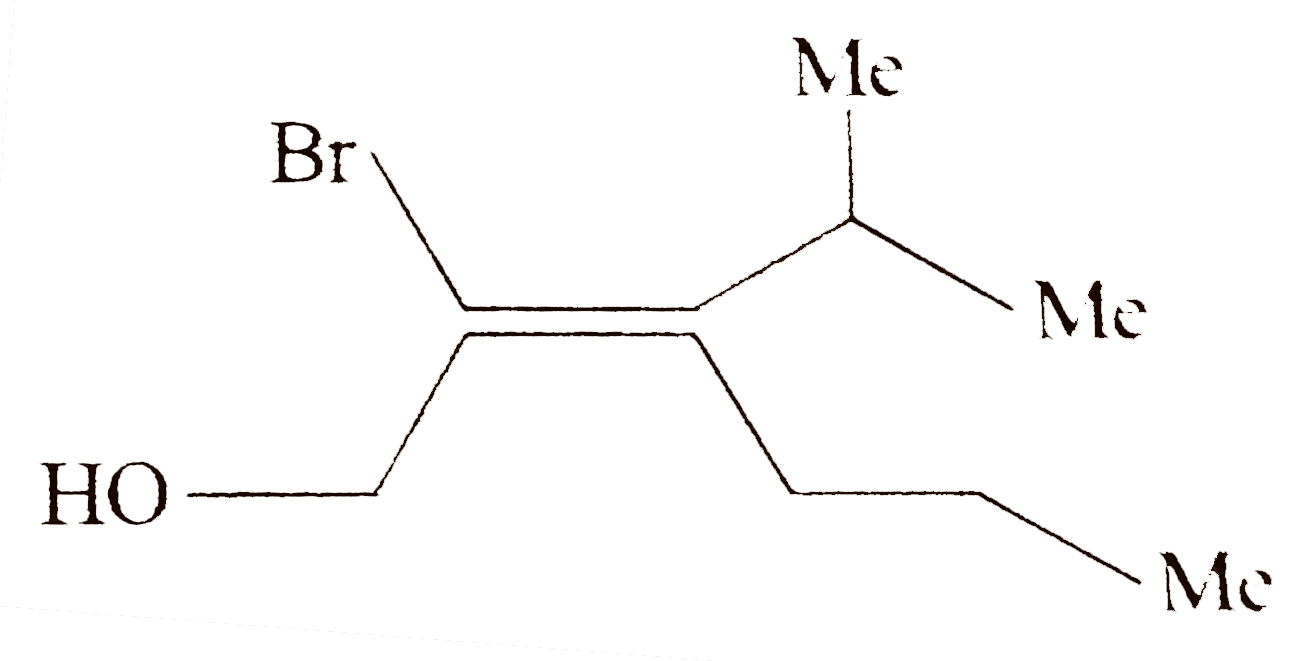
`c.`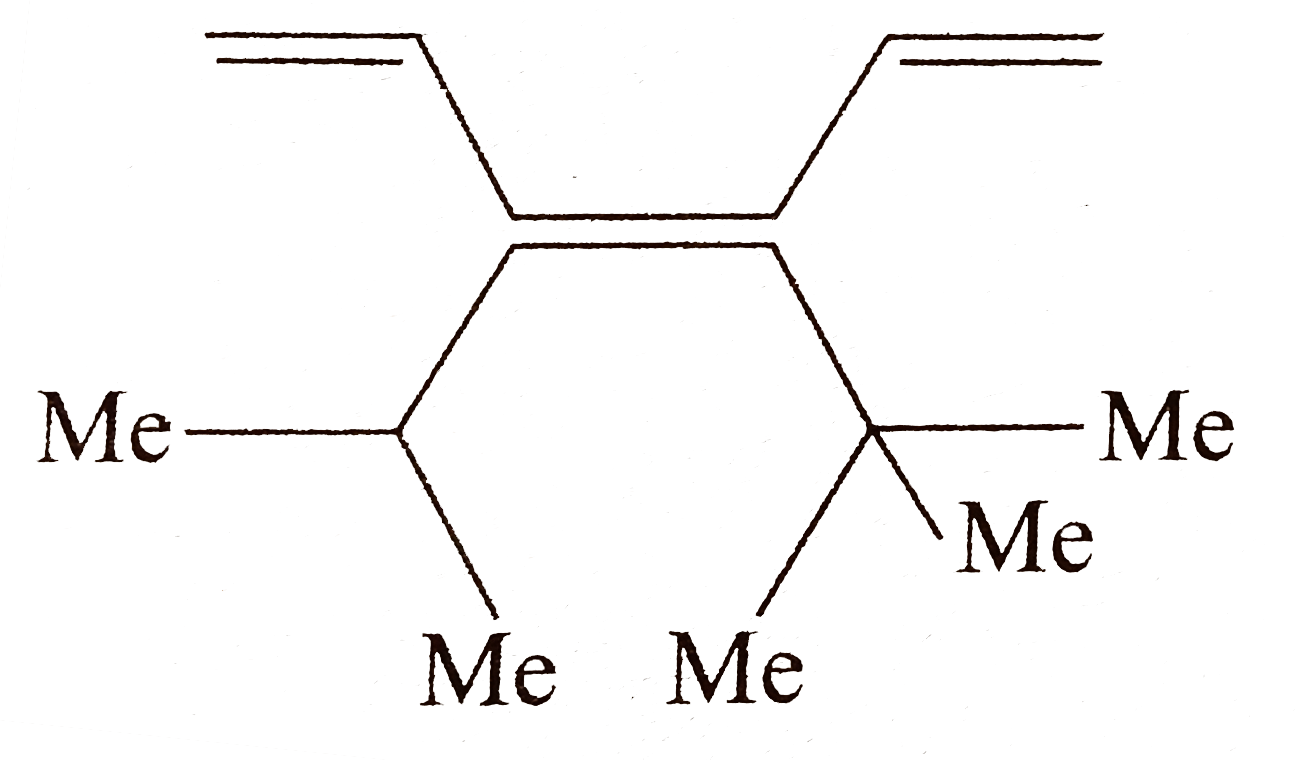
View SolutionGive `IUPAC` names for the following using `E` and `Z` designations.
`a.`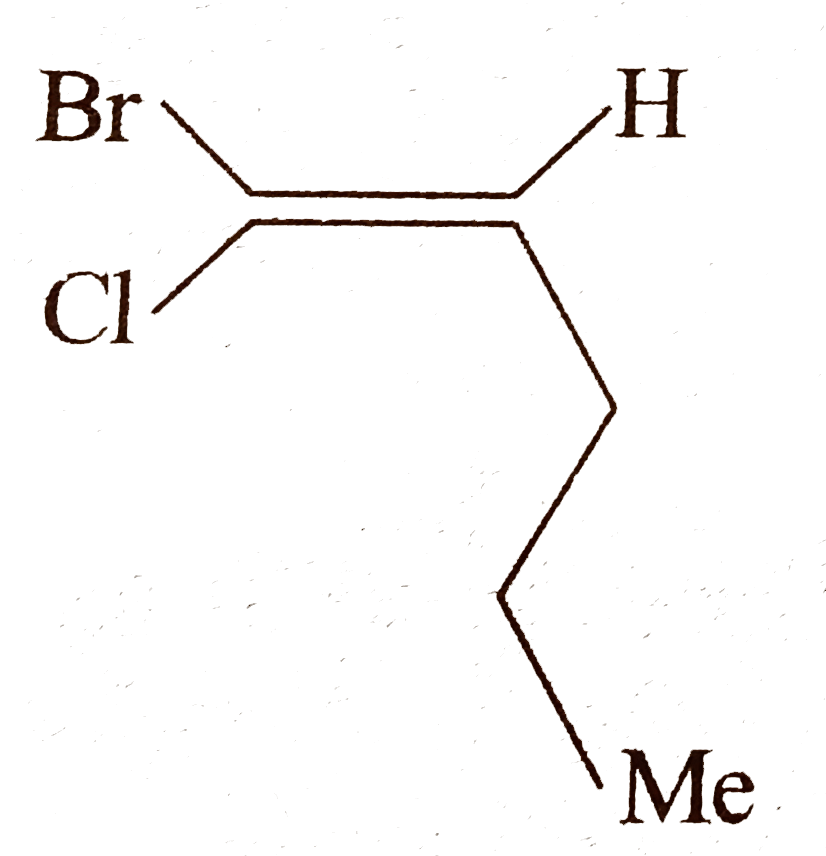 , `b.`
, `b.` 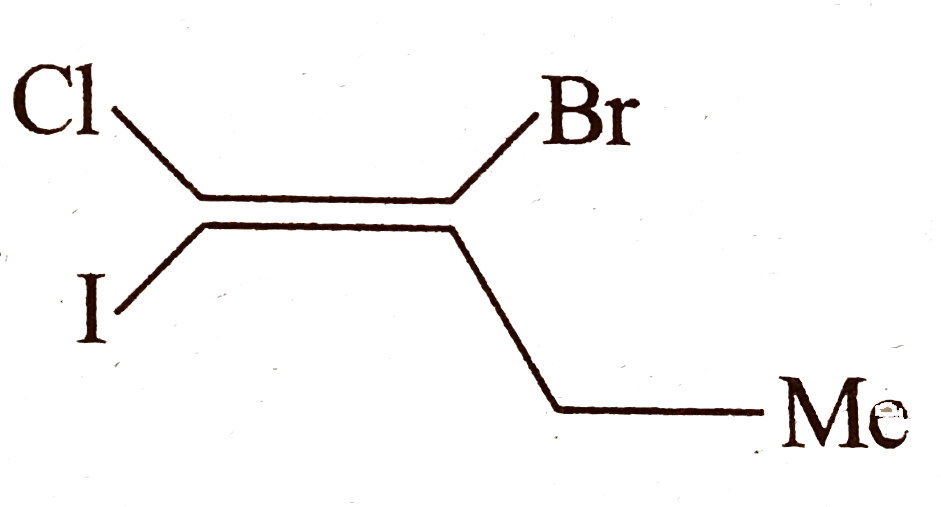
`c.`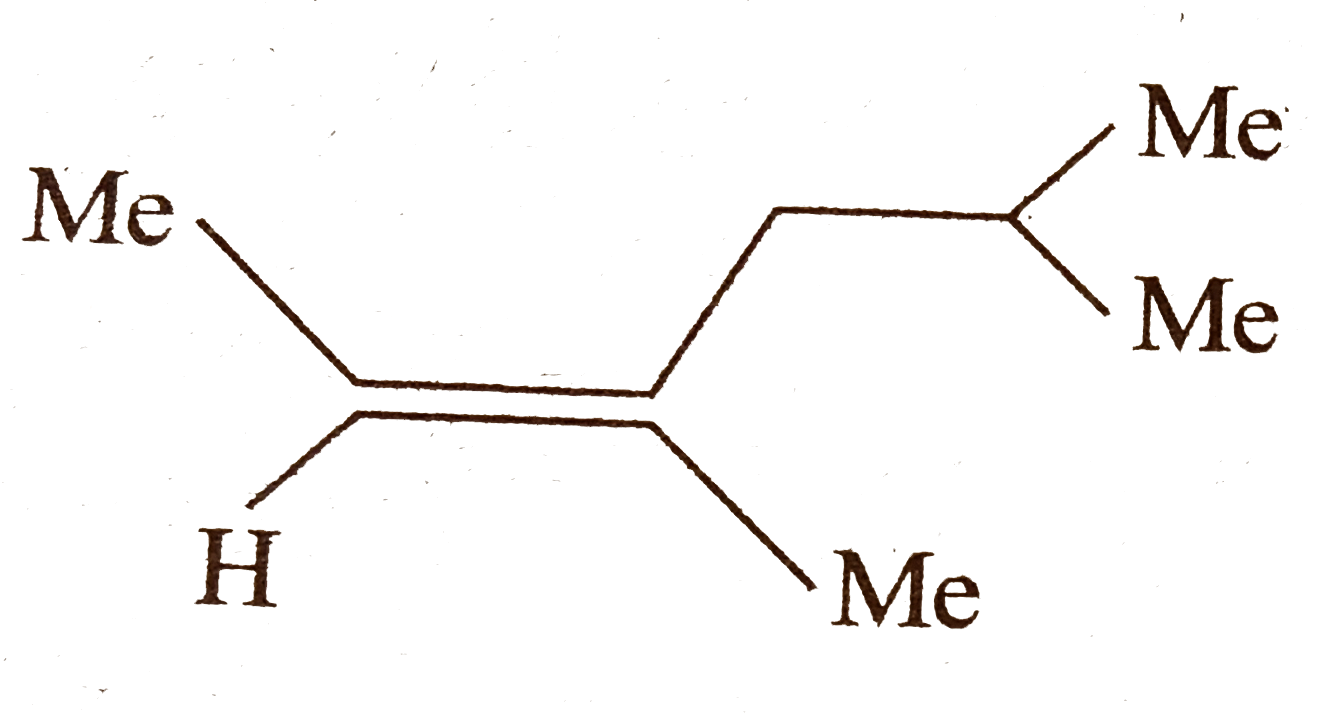 , `d.`
, `d.` 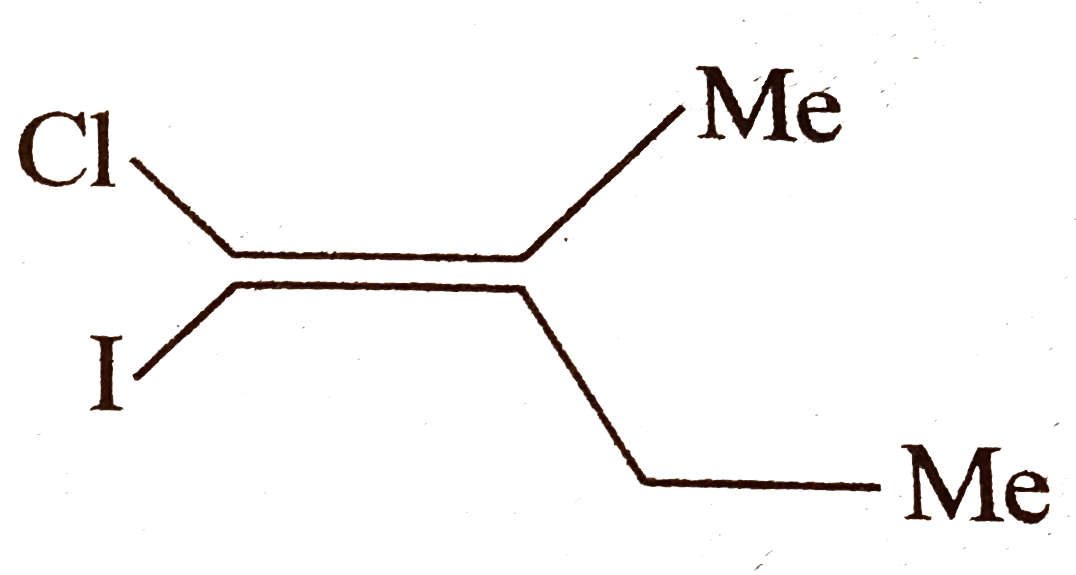
View SolutionOn heating of ammonium cynate what is the product?
View SolutionComplete the following reaction.
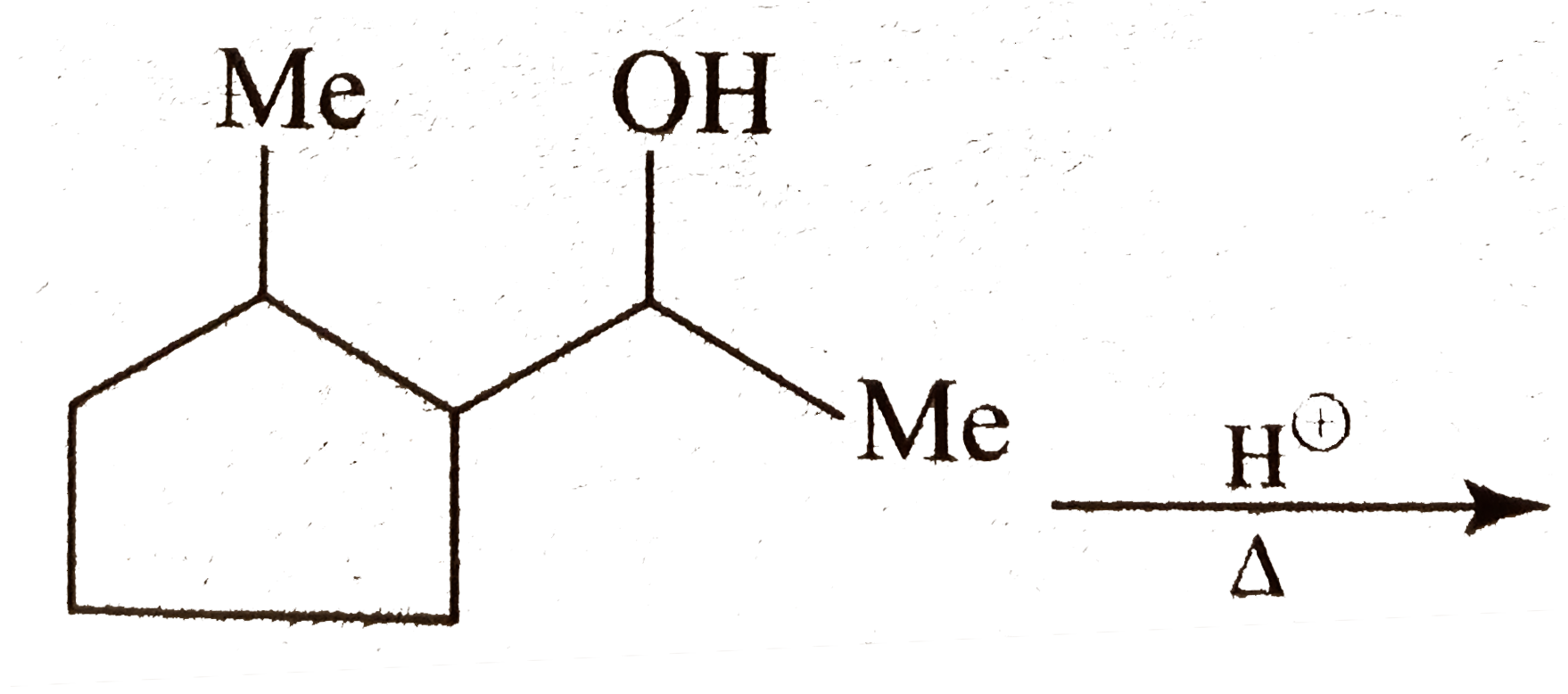
View SolutionGive the reaction of the following `:`
`i.`
`ii.` `2-`Bromo butane `+ C_(2)H_(5)Ona(` three products `)`
View SolutionGive the decreasing order or reactivity for the elimination with strong bases of `RX(X=F,CI,Br, `and `I). `
`b.` How is this information important to decide between `E2` and `E1cB`?
View SolutionA compound `(A)` is a sodium salt of dibasic acid and on electrolysis gives a gas `(B),` gas `CO_(2)` at anode, and `H_(2)(g)` at cathode.
Gas `(B)` does not give any test for unsaturation, `i.e.,` it does not decolourise `Br_(2)` water solution and aqueous `KMnO_(4)` solution.
Gas `(B)` on reaction with `(H_(2)+Pt)` at room temperature does not react but at `120^(@)C`, gas `(B)` gives butane. Identfy `(A)` and `(B)`
View SolutionGive the structure of an optically active alkene `(A)` having the lowest molecular mass, which on catalytic hydrogenation gives an optically inactive compound `(B)`.
View SolutionGive the structure of an optically active alkyne `(A)` having the lowest molecular mass, which on hydrogenation with Lindlard's catalyst and Birch reduction gives the same lowest molecular mass optically active alkene.
View SolutionGive the structure of an optically active unsaturated hydrocarbon `(A)` with the lowest molecular mass. Give the products of `(A)` with `:`
`a.` `H_(2)+Pd+BaSO_(4)+S` or quinoline in boiling xylene,
`b.` `K+Liq.NH_(3)+ETOH,`
`c.` `D_(2)+`Piosoned `Pd,`
`d.` `Na+Liq.ND_(3)+EtOH`, and
`e.` `Na+Liq. NH_(3)+EtOD.`
View SolutionExplain the formation of `(A)` and `(B)` in the following reaction.
`Oct-1-en eoverset(NBS+C C I_(4))underset(hv)rarrunderset((80%))((A))+underset((20%))((B))`
View SolutionGive all the possible products from the reaction of `NBS` with `4-`methyl `-` pent `-2-`ene` with the relative yields.
View SolutionComplete the following reactions `:`
`a.` `(F)overset (+D)larr(E)overset(1.Li)underset(2.Cu l)larr (D)overset(HBr)larrCH_(3)CH=CH_(2)overset(NBS)rarr (A) overset(NBr)underset(RCOOR)rarr(B) overset(Mg)rarr(C)`
`b.` `CH_(3)CH=CH-CH_(3)overset(2NBS)rarr(A)overset(2I^(c-))rarr(B) overset(H_(2)N NH_(2)//O_(2))rarr(C)`
`c.`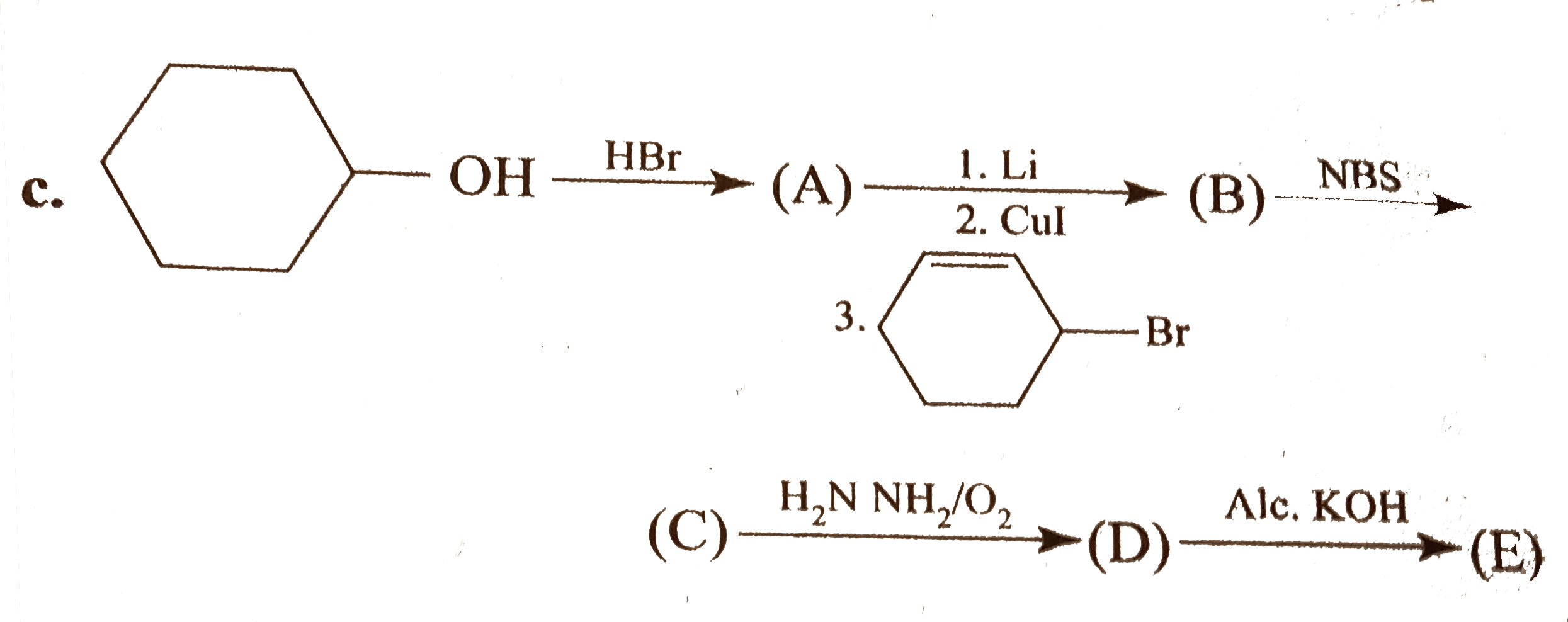
View Solution`a.`

`c.` Tetrachloroethene does not give the test for unsaturation , `i.e.,` it does not decolourise `Br_(2)` water solution. Explain why
View Solutioni. Z-2,3-Dideuteroeo-but-2-ene `overset("Hydroboration")underset("bromination")rarr`
ii.E-2,3-Dideutereo-but -2-ene `overset("Hydroboration")underset("bromination")rarr`
iii. 1,2-Dideutereo cyclohexene `overset("Hydroboration")underset("bromination")rarr`
View SolutionComplete the following reactions`:`
`i.` `CH_(2)=CH_(2)` `overset(EtONa+eTOH)rarr`
`ii.` `F_(2)C=CF_(2)overset (EtONa+EtOH)rarr`
View Solution`a.` Convert butan`-1-`ol to `3-`chlorobutan `-2-`ol.
View SolutionConvert `:`
`a.` `1-`Bromobutane to `2-`bromobutane
View SolutionConvert`:`
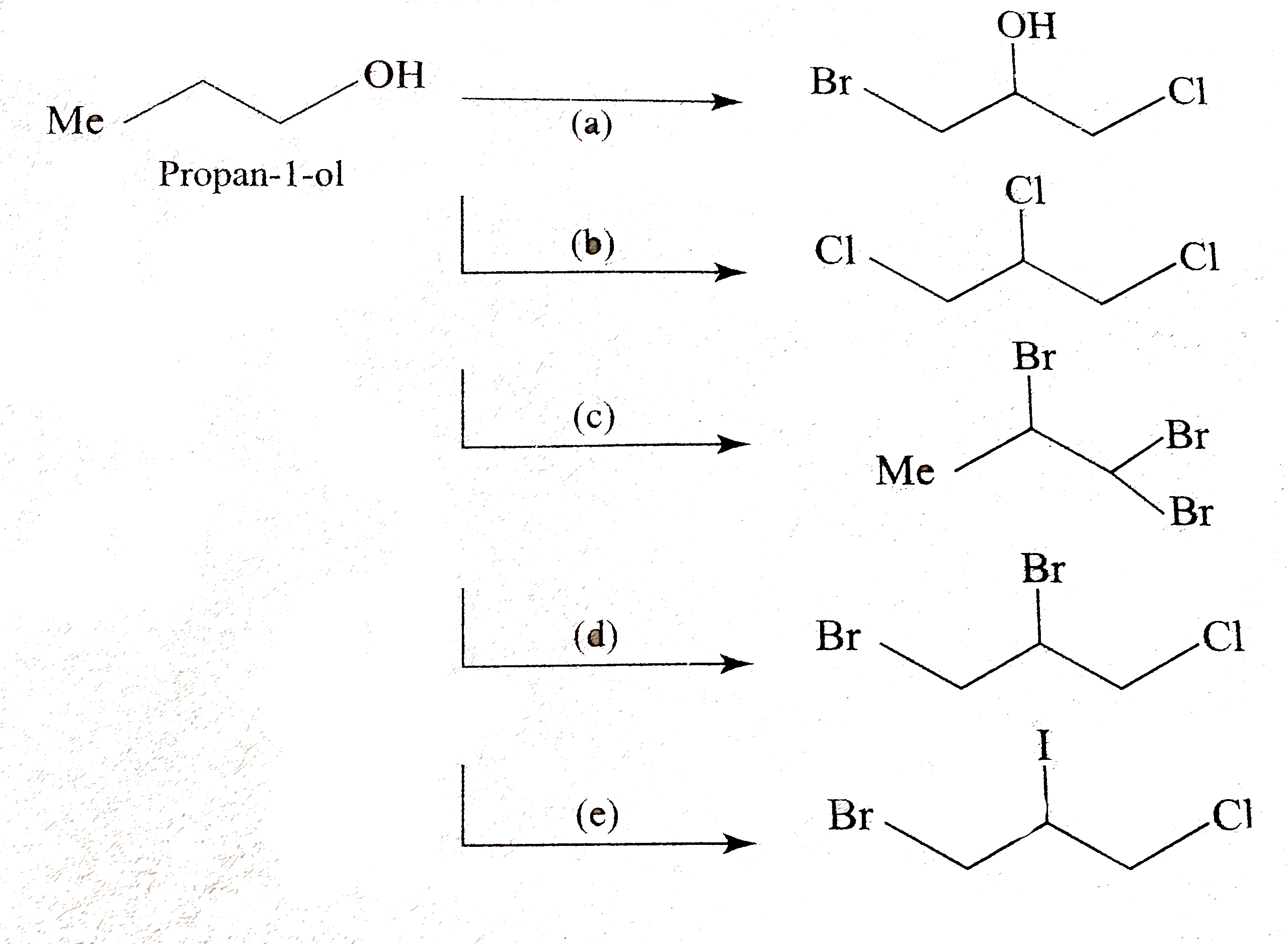
View SolutionWrite the monomer of the following polymer `:`
`a.` `P.M.M.A.` ,`b.` `H.D.P.E `
`c. P.A.N` , `d.` Polystyrene
View SolutionGive examples of some optically active polymers
View SolutionBased on the arrangement of branching of `[(R)-(Ph),` in case of styron of `(CH_(3))`, in case of polypropene `]` groups relative to long`-` chain backbone of the polymer, how many types of stereoisomers are possible for styron or polypropene ?
View SolutionConvert the following `:`

View SolutionIdentify compound `(A)`.
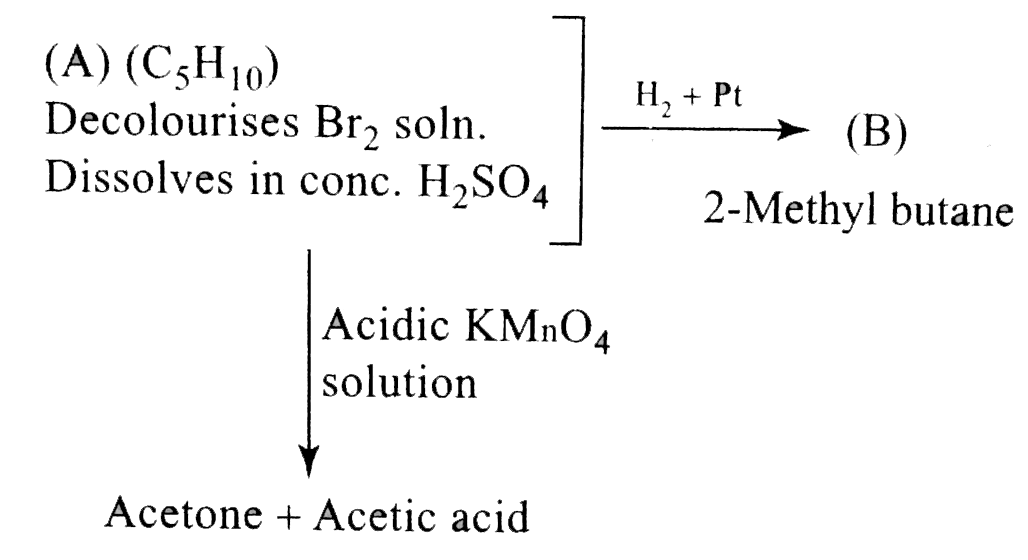
View SolutionIdentify compound `(A)` and `(B)`.
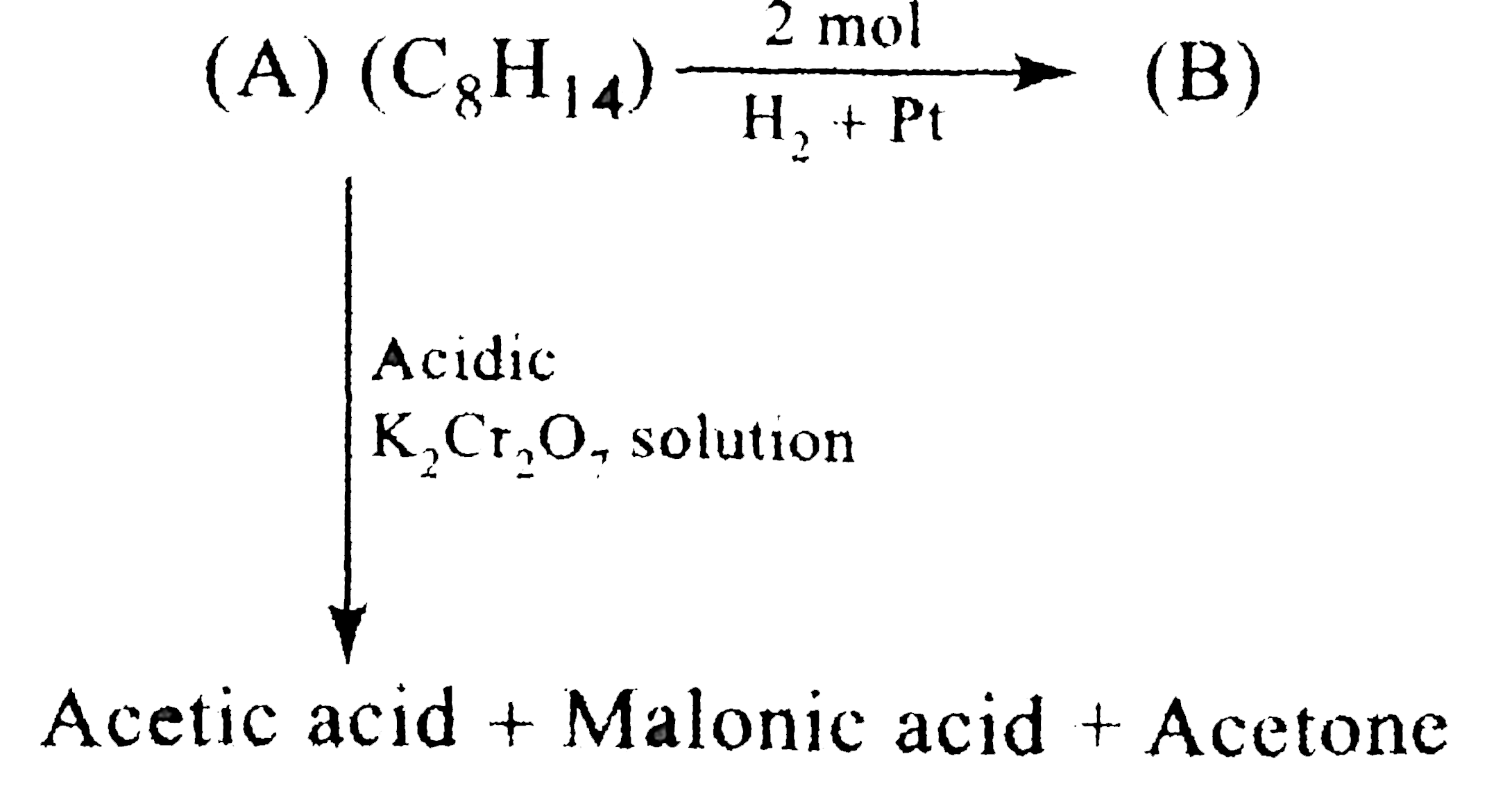
View SolutionIdentify compounds `(A)` and `(B)`
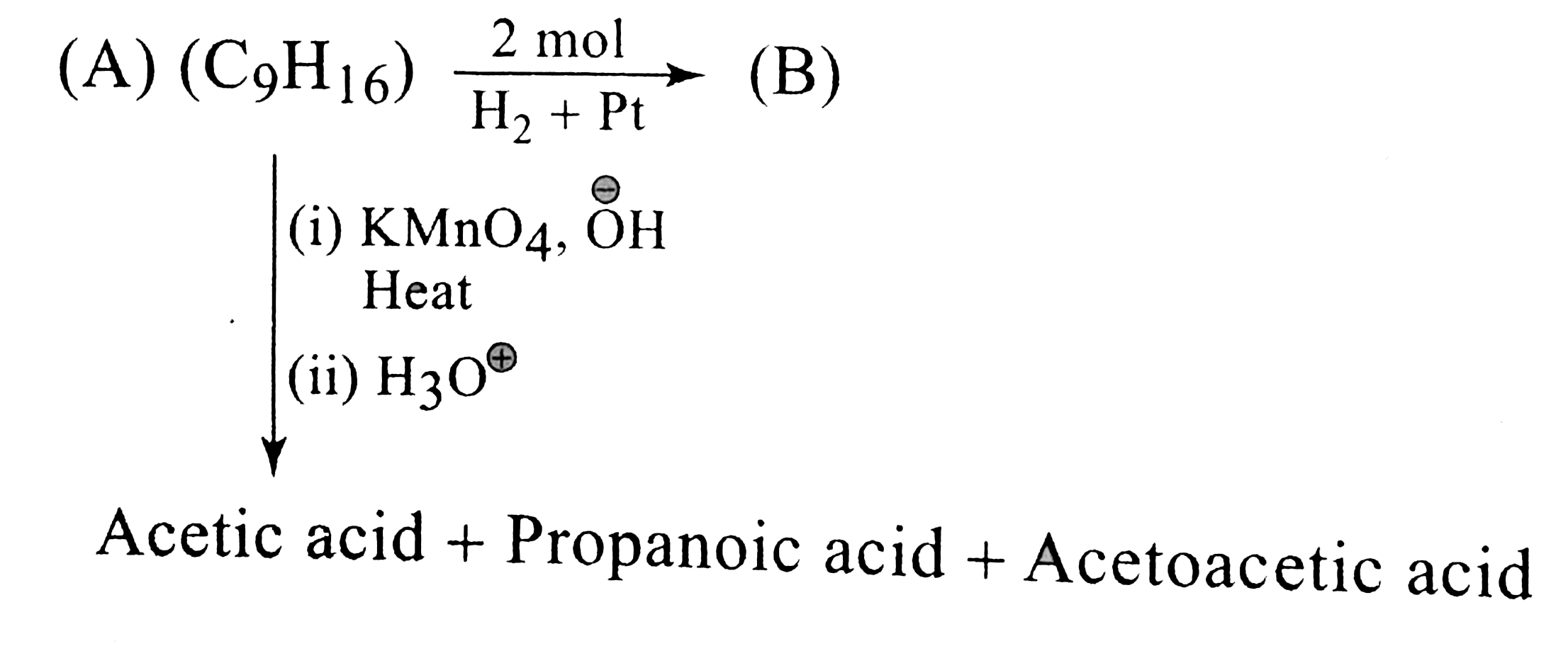
View SolutionWrite the products of the reductive and oxidative ozonolyses of mesitylene.
View SolutionIdentify compound `(A)` in the following reactions.
`a.`Compound `(A)O_(3) //H_(2)+Ptrarr2-`Methyl butanal and pentan `-2-`one
`b.` Identify `(A)` and `(b)`.

View SolutionGive the product of the following with `:`
`a. O_(3)//Zn-CH_(3)COOH` ,`b. O_(3)//H_(2)O` ,`c. O_(3)//H_(2)O_(2),`
`d.` acidic `KMnO_(4)` and `e.` cold alkaline `KMnO_(4)`.
`i.`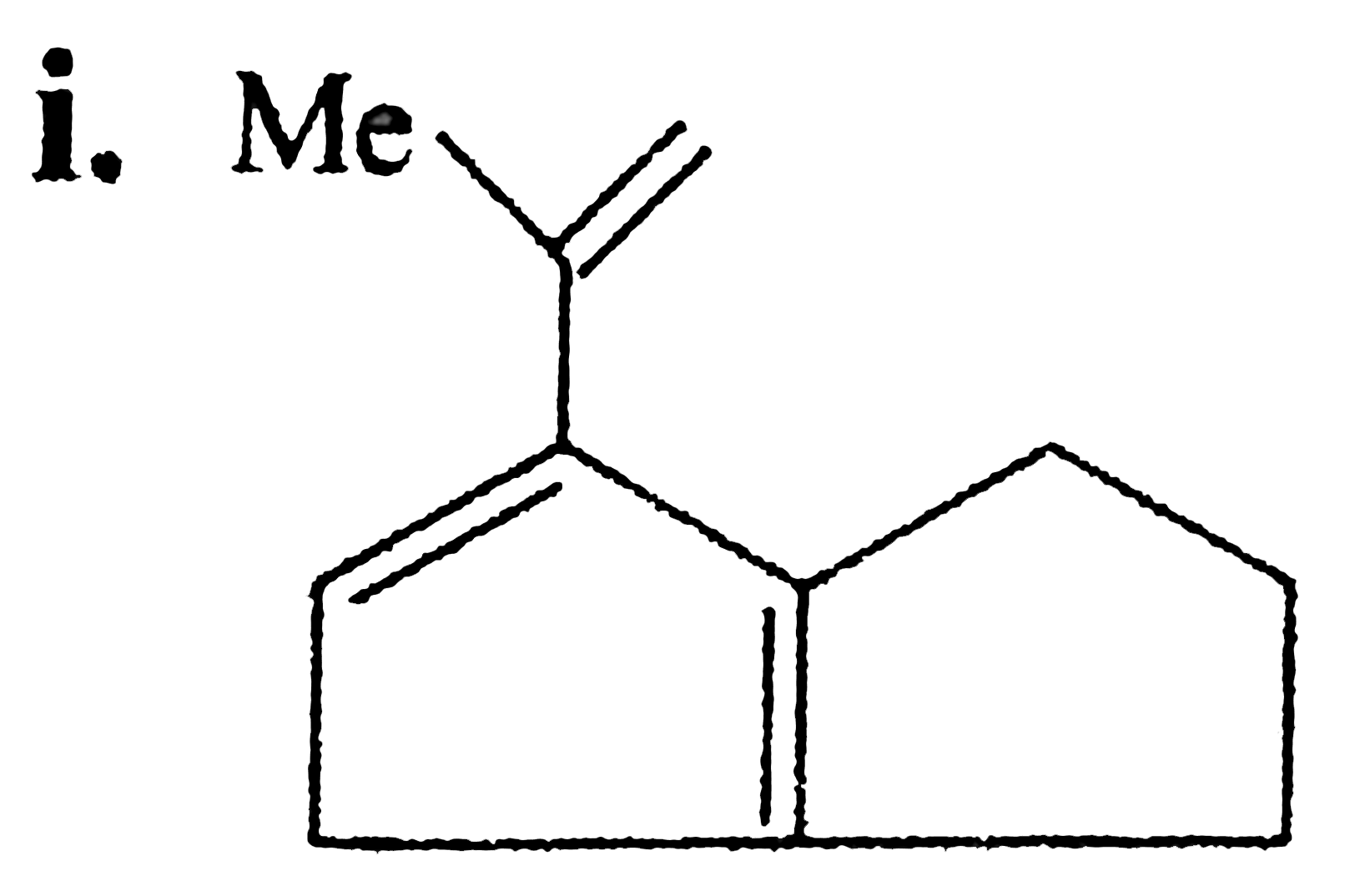
View SolutionWrite the structural formulae for the compounds that yields the following products on reductive ozonolysis.
`a.` `2 mol ` of butan `-2- `one
`b.` Methanal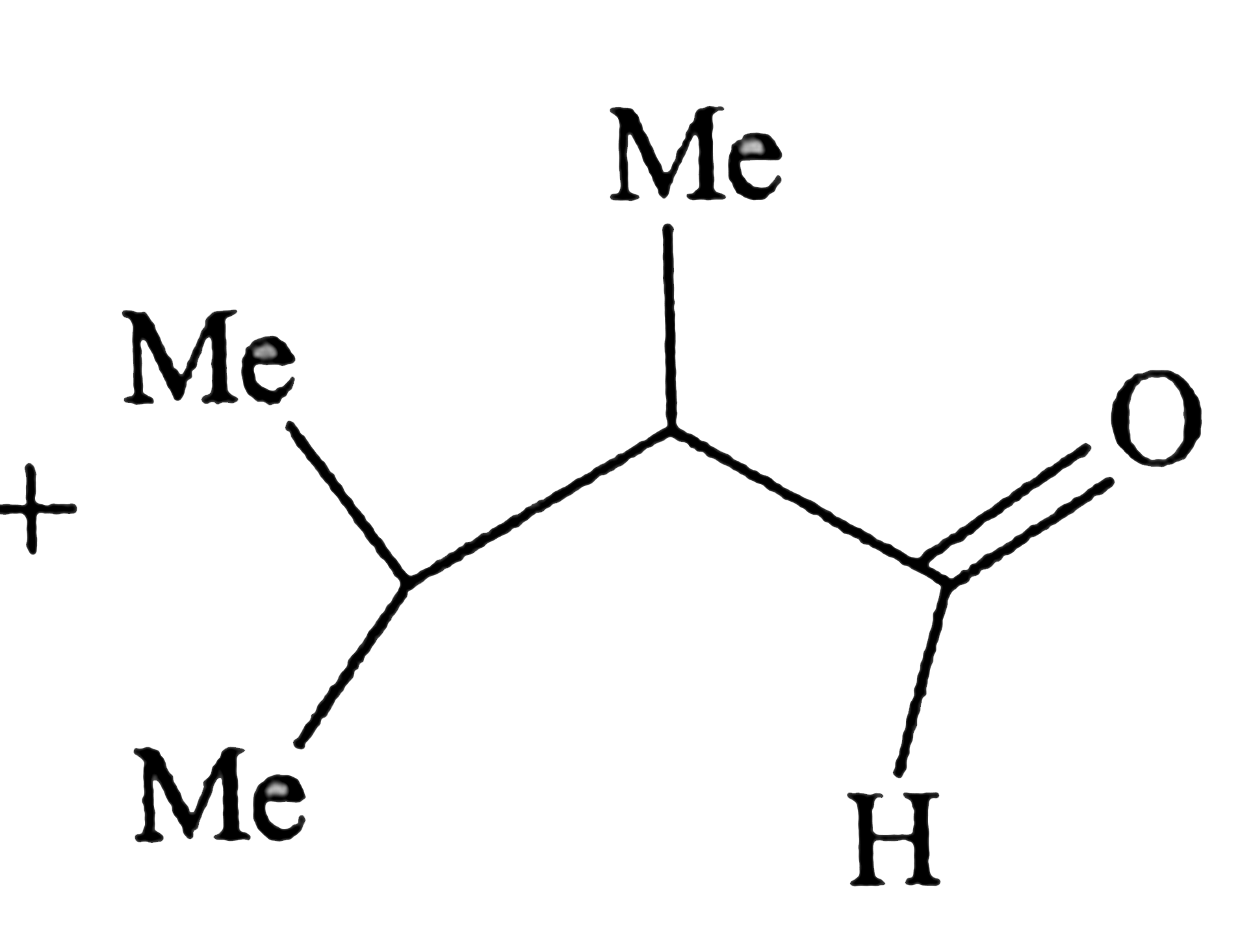
`c.` Pentan `-3-`one `+` Glyoxal `+` Propanal
`d.` Pretan `-1,5-` dial
`e. ` `2 mol ` of
View SolutionGive the product obtained from the oxidation of the following compounds with acidic `K_(2)Cr_(2)O_(7).`
`a.` Cyclobutene , `b. 1-`Methyl cyclobutene
`c.` `1,2-` Dimethyl cyclobutene
View Solution
Find C
View SolutionComlete the following reaction `:`
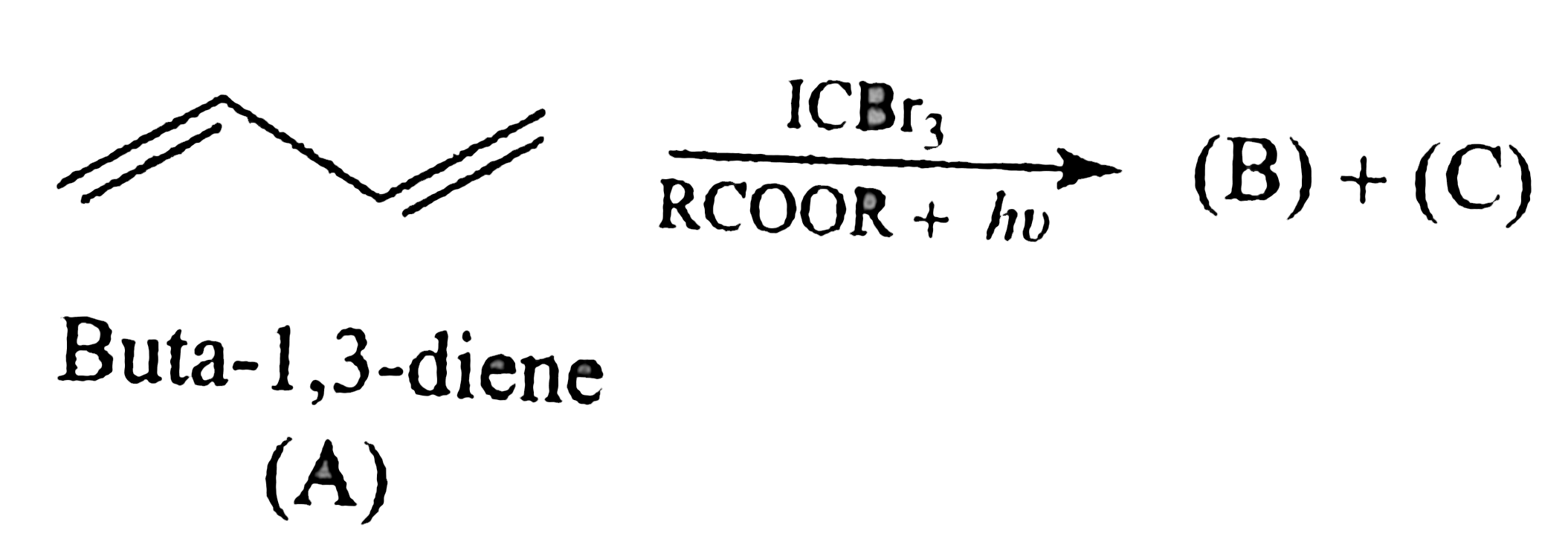
Also write the mechanism of the reaction.
View SolutionGive all the structural isomers `(` excloding stereoisomers and allenes `)` of diene with the molecular formula `C_(6)H_(10)`.
View SolutionComplete the following reaction `:`

Also write the mechanism of the reaction.
View SolutionWrite all the resonating structures of `:`

Which of these carbons will react with `Br^(Θ)` to give thermodynamically favoured product ?
View SolutionConvert `:`
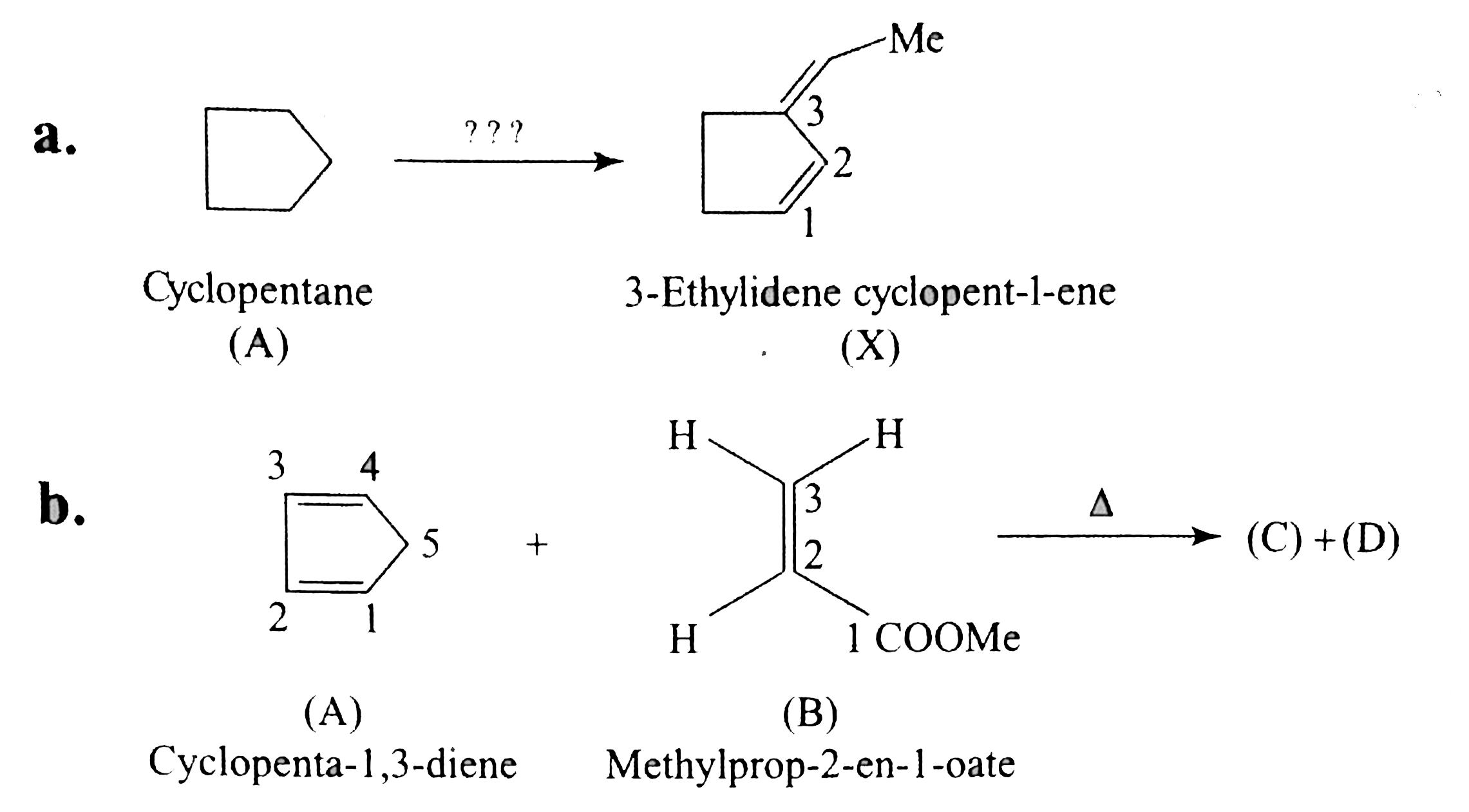
View SolutionGive the name and structure of the lowest molecular mass cumulative polyene that shows only geometrical isomeris `(` diastereomers `)` and not optical isomers.
View Solution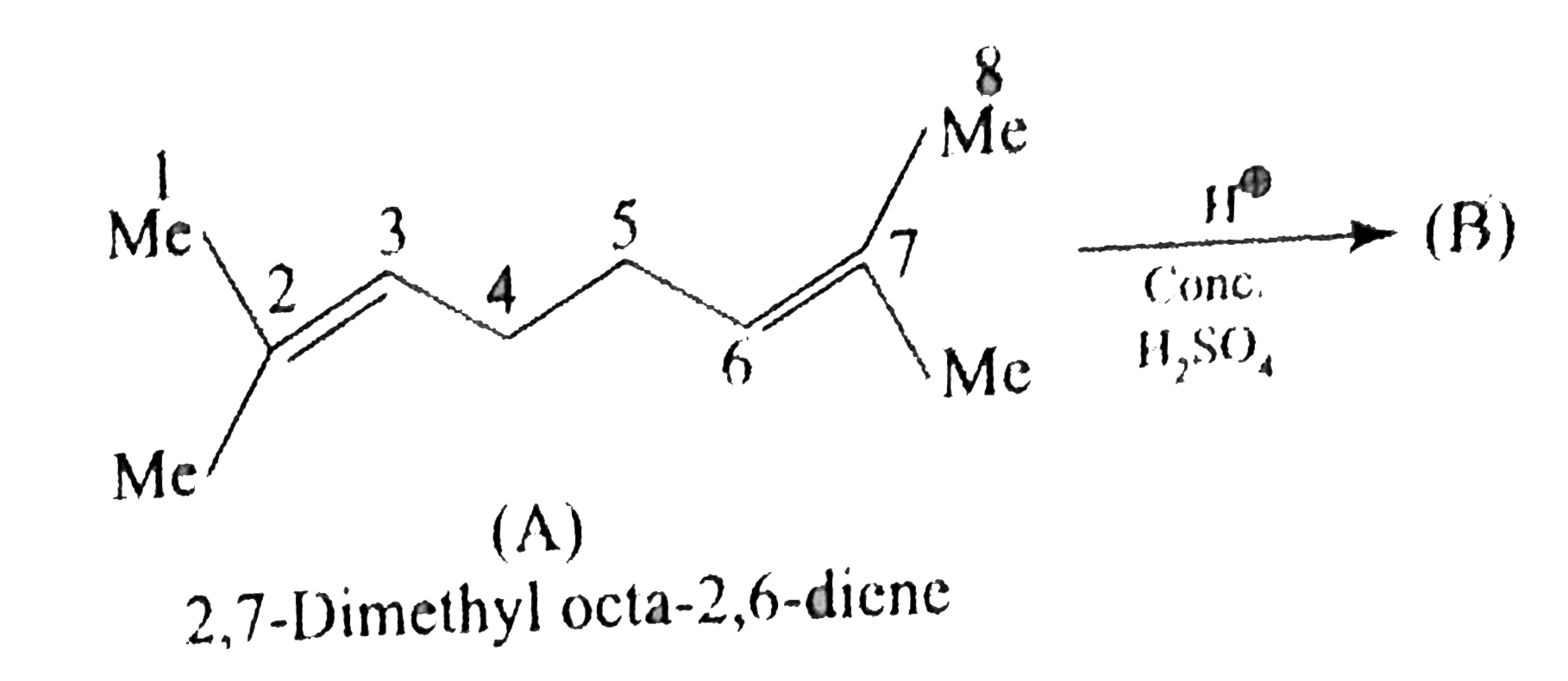
Complete the reaction
View Solution
SOLVED Example questions and complete solutions for chapter ALKENES AND ALKADIENES of CENGAGE CHEMISTRY (ENGLISH) of Class 11